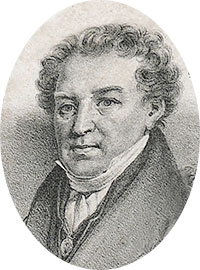
Olof Per Ulrik Arborelius (4 November 1842 - 2 June 1915) was a Swedish landscape and genre painter. He served as a Professor at the Royal Swedish Academy of Fine Arts from 1902 to 1909. [1] [2]

Olof Per Ulrik Arborelius (4 November 1842 - 2 June 1915) was a Swedish landscape and genre painter. He served as a Professor at the Royal Swedish Academy of Fine Arts from 1902 to 1909. [1] [2]
Arborelius was born in Orsa, Sweden. The Arborelius family was originally from Arboga and can be traced to the 16th century. His father, Olof Ulric Arborelius , was a priest and dialectologist. His mother, Charlotta Dorotea Friman (1817-1892), was his father's third wife. His younger brother, Rudolf Arborelius , was an architect. In 1873, he married his cousin, Hedvig Maria Arborelius (1853-1909). His grand-nephew is Roman Catholic cardinal Anders Arborelius. [3] [4]
He received a recommendation for the Royal Swedish Academy of Fine Arts from Johan Fredrik Höckert. After seven years of studying there, he took work in the studios of Edward Bergh, but soon received a travel grant that enabled him to embark on a three year study trip to Europe. He visited Paris, Munich and Rome and spent some time in Düsseldorf. While in Rome, he became associated with the Virtuosi al Pantheon. [4]
When he returned to Stockholm he became a member candidate (agré) at the Academy. For many years, he was a Supervisor at the KTH Royal Institute of Technology (Kungliga Tekniska högskolan). In 1902, he was appointed a Professor of Landscape Painting at the Academy. [5]
He was originally counted as a follower of the Düsseldorf School. During the 1880s, he began to express opposition to the prevailing styles of teaching, but never embraced impressionism, although he sharpened the colors in his palette. [6] The illustrator, Fritz von Dardel, felt moved to criticize his use of the color green. He made extensive use of folk motifs from Dalarna. At the Venice Biennale of 1903, one of his works was purchased by King Victor Emmanuel. [4]
His works may be seen at the Nationalmuseum and the Göteborgs konstmuseum, as well as at the Finnish National Gallery in Helsinki.

Mårten Eskil Winge was a Swedish artist. He was a professor at the Royal Swedish Academy of Arts. He was associated with the Düsseldorf school of painting. His art was influenced by the Norse mythology themes also found in works by Nils Blommér (1816–1853) and Carl Wahlbom (1810-1858).

Gustaf Olof Cederström (1845-1933) was a Swedish painter who specialized in historical scenes and portraits.

Johan Georg Otto von Rosen was a Swedish painter and greve (count). He specialized in history paintings and portraits, done in the Academic style.

Amalia Euphrosyne Lindegren was a Swedish artist and painter. She was a member of the Royal Swedish Academy of Arts (1856).

Kilian Christoffer Zoll was a Swedish painter, graphic artist and illustrator in the style of the Düsseldorf School. He created genre scenes, landscapes, altarpieces and portraits.

Per Ekström, also Pehr or Peter was a Swedish landscape painter, known for his atmospheric scenes with sunsets, in barren or deserted places.

Carl Johan Fahlcrantz was a Swedish painter.

Gustaf Wilhelm Palm was a Swedish landscape painter and art professor.

Axel Wilhelm Nordgren was a Swedish landscape painter.

Johan Edward Bergh was a Swedish jurist and landscape painter, associated with the Düsseldorf School.

Henrik Axel Kulle was a Swedish painter who specialized in genre scenes.

Victor Reinhold Forssell was a Swedish landscape, animal and genre painter.

Joseph Magnus Stäck was a Swedish landscape painter and art professor.

Petter Gabriel Wickenberg, known as Per was a Swedish painter and designer who specialized in landscapes with figures.

Anton Jonsson Genberg was a Swedish painter in the Naturalist style who specialized in mountain landscapes.

Olof Hermelin was a Swedish painter, author and landowner.

Per Daniel Holm was a Swedish landscape painter.

Louis Belanger was a French-born Swedish landscape artist.

Adolf Ulrik Schützercrantz was a Swedish artist and military officer. He served in the Second Life Guards regiment between 1819 and 1851, and was awarded the Order of the Sword in 1839. At the same time, he was active as an artist. He worked in several techniques, producing topographical views, scenes from everyday life, illustrations of costumes and military uniforms, and travel sketches. He was co-founder of the predecessor of the present-day Swedish Association for Art and for a time its secretary. He also participated in the organisation of what would later become the museum Livrustkammaren.

Anton Ulrik Berndes was a Swedish artist and land surveyor. He specialised in producing portrait miniatures, but was also active as a graphic artist using other techniques, and is credited with introducing the mezzotint to Sweden.